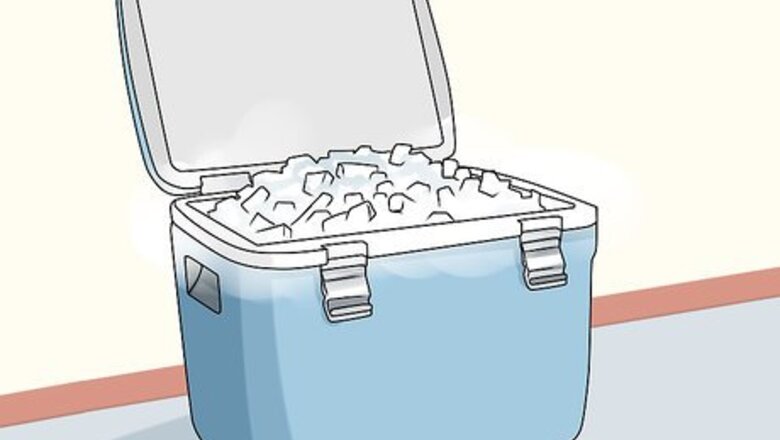
views
Handling Dry Ice
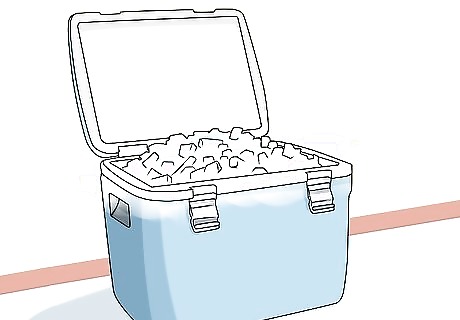
Get your dry ice as close to the time of use as possible. This is important due to the fact that dry ice turns from a solid into a gas at a rate of five to ten pounds per 24 hours in a normal insulated container. Buying it too far in advance could mean you won't you get a chance to use it before it disappears.

Handle dry ice carefully. You can use oven mitts, insulated gloves, or thick towels to handle dry ice, otherwise, it will burn your hands. Dry ice registers at negative 109 degrees F (negative 79 degrees C). The burn dry ice creates is similar to frostbite.

Transport dry ice in a well ventilated vehicle. Dry ice is carbon dioxide and carbon dioxide is hazardous to your health in large or concentrated quantities. If too much dry ice gas accumulates in a small space, you can suffer from carbon dioxide poisoning. Keep the windows in your vehicle open when transporting dry ice. You can put a sleeping bag, or other similar insulating materials, around the insulated container you plan on transporting your dry ice If transported inside your vehicle (excluding the trunk) for periods longer than ten minutes, you should open your window to ventilate any concentrations of carbon dioxide.
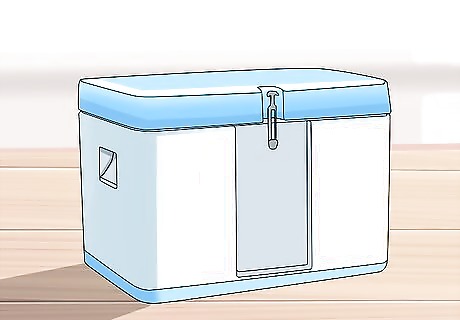
Store dry ice with proper air ventilation. It should not be stored in a small space where the gas can build up and become dangerous. Keep dry ice where the air can flow. Styrofoam and newspaper are suitable insulators for preserving your dry ice. Use caution in low areas; carbon dioxide in gas form is heavier than air and settles close to the ground. Proper ventilation is the best way to prevent a buildup of CO2 in low spots.
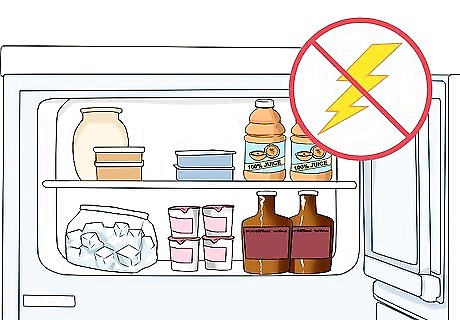
Prevent food from spoiling during a power failure. A broken freezer full of food, or a freezer that's been shut off from power failure, can be saved with the cooling power of dry ice. However, you may not want to store your dry ice in a conventional, functioning freezer. The dry ice may be a colder temperature than your freezer thermostat can handle.

Place dry ice on an appropriate surface. Counter tops are not ideal, as the surface may crack from the extreme cold of the dry ice. If you are using dry ice in a freezer or refrigerator because the unit does not work, a small amount of dry ice is all that is needed to provide cooling and will not cause harmful effects. Wrap your dry ice in newspaper to protect it from dissipating too quickly due to air flow.
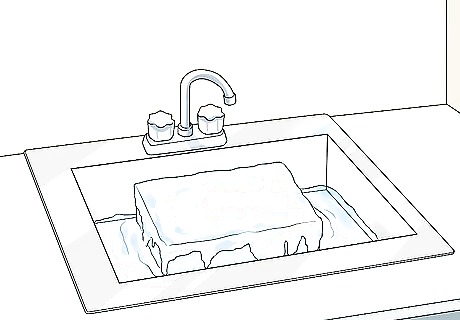
Dispose of dry ice by letting it return to gaseous form. Leave it out at room temperature and do not dispose of it in the garbage, sewer, sink or tub. Washing dry ice into your plumbing can do damage to your pipes and you should be certain you don't leave it to evaporate someplace children or animals might touch it. Some places you might allow your dry ice to evaporate include: In your sink. In your shower or bathtub. Outside, out of reach of animals and children.
Using Dry Ice for Fog Effects
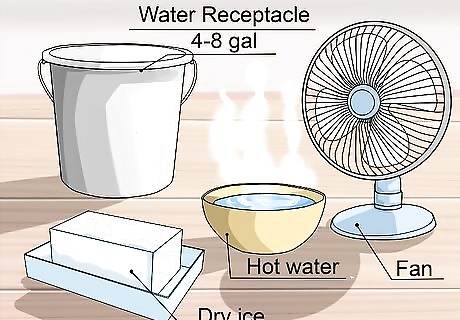
Gather your materials. Your dry ice will create fog in normal temperatures, but to make strong fog effects, you'll need to be prepared. Dry ice can be purchased at most local grocery stores and convenience stores. To get the thickest fog and really wow all onlookers, you'll need: Dry ice Fan Hot water Water receptacle (4 to 8 gallon; durable plastic or metal preferred)

Prepare the receptacle. Dry ice combined with hot tap water can create a powerful, thickly flowing fog effect. Cool water, or water that has cooled from the addition of dry ice, will cause thinner, wispier fog. Fill your water receptacle with as hot of water as you can get. You don't have to heat your water to the point of boiling, but the hotter the water, the stronger your fog will be.

Prevent water damage. The reaction of the dry ice turning back into carbon dioxide, called sublimation, can cause the water in your receptacle to bubble intensely and may cause some of the water to splash out. Place a tarp beneath your water receptacle, or place it where water that has escaped your receptacle won't do damage. The air that carries your fog will also carry moisture and can leave floors slipper. You should take proper measures to ensure no one slips in these areas.
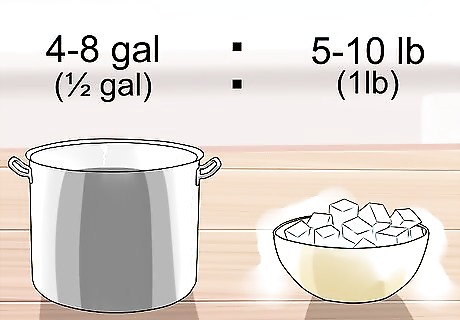
Measure your proportions. Having the right ratio of dry ice to water will improve your fog effect. For a sustained 15 minutes of thick fog, add about 5 to 10 pounds of dry ice to approximately 4 to 8 gallons of hot water. The best ratio for fog creation is about one half gallon of hot water per pound of dry ice.

Guide the path of your fog effect. This can be done easily with a small fan. Dry ice has a tendency to seek the lowest point because it is heavier than air, so if you are on uneven ground or if your water receptacle is in a low spot, a fan on a low setting can help disperse it more widely.
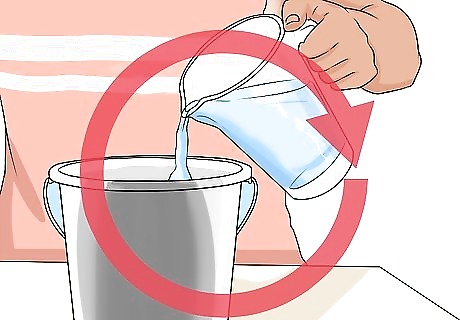
Change your water. As the dry ice melts, it will release carbonation into the water which can negatively impact fog production. Keeping your water agitated and changing it frequently will improve your fog effect.
Using Dry Ice for Freezing Berries
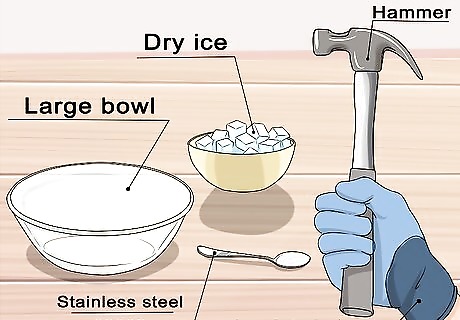
Acquire your flash-freeze tools. Freezing berries and other delicate fruit can take up a lot of freezer space while freezing and may leave you with freezer burned food. This simple and quick trick will have bushels of your berries frozen in no time. You'll need: Dry ice Hammer Insulated gloves Large bowl Stainless steel spoon

Rinse the berries thoroughly. Make sure that any dirt, bacteria, or any trace contaminants are fully removed from your produce before freezing. After you have finished this, you should allow the fruit to dry for a brief period on a towel.
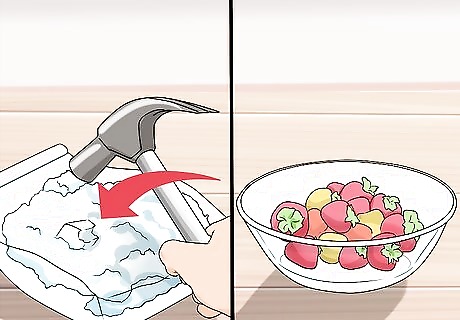
Crush your dry ice and transfer your berries. You can move your berries to your bowl once these have dried to prepare to mix with the dry ice. Take your dry ice, while still in its packaging, and use a hammer to break the ice into small pieces. If there is concern that, while breaking your ice, it might chip or fly off irregularly, to protect your eyes and face, it is recommended you wear a face shield and goggles.
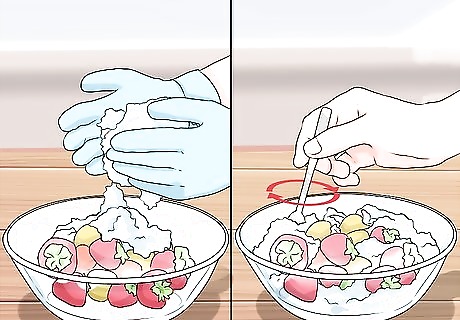
Toss your fruit salad with the dry ice. You will need your insulated gloves to do this. Now that your ice is broken into manageable pieces, you can unwrap the packaging of the dry ice with your gloved hands, and mix the dry ice into the bowl. Gently stir the berries and ice with your stainless steel spoon until the ice is distributed throughout the berries.

Place the bowl in a safe place. You don't want your bowl in a small, unventilated container, as this can cause a buildup of carbon dioxide that might damage your container. Frozen berries can be stored in a plastic baggie and stored, in some cases, for up to a year or more. You might consider storing your berries, while freezing, in: a large cooler (Styrofoam works well), or your sink. Be careful if you leave your berries and dry ice in the open. Children or small animals could get hurt playing with or trying to eat dry ice.




















Comments
0 comment